This page records the details of the matches played by the Japan national football team during 2009. In 2009 the Japan national football team competed in the fourth round of the AFC 2010 FIFA World Cup qualifications, the 2011 AFC Asian Cup qualification, and the 2009 Kirin Cup, amongst other friendly matches. [1]
| Player | -2008 | 01.20 | 01.28 | 02.04 | 02.11 | 03.28 | 05.27 | 05.31 | 06.06 | 06.10 | 06.17 | 09.05 | 09.09 | 10.08 | 10.10 | 10.14 | 11.14 | 11.18 | 2009 | Total |
| Shunsuke Nakamura | 82(22) | - | - | - | O | O(1) | - | O | O | O | - | O | O | O | - | O | O | O(1) | 11(2) | 93(24) |
| Yuji Nakazawa | 82(15) | - | O | O(1) | O | O | O | O | O | O | - | O | O | O(1) | - | O | O | O | 14(2) | 96(17) |
| Yasuhito Endo | 73(7) | - | - | O | O | O | O | O | O | - | - | O | O | O | - | O | O | O | 12(0) | 85(7) |
| Junichi Inamoto | 70(4) | - | O | - | - | - | - | - | - | - | - | - | O(1) | - | O | - | O | - | 4(1) | 74(5) |
| Seigo Narazaki | 63(0) | - | - | - | - | O | O | O | O | O | O | - | - | - | - | - | - | - | 6(0) | 69(0) |
| Keiji Tamada | 53(13) | - | O | O | O | O | O | - | - | O | O | O | O(1) | O | - | - | - | - | 10(1) | 63(14) |
| Yuichi Komano | 40(0) | O | - | O | - | - | O | - | O | - | - | - | O | O | O | - | O | O | 9(0) | 49(0) |
| Seiichiro Maki | 35(8) | O | O | O | - | - | - | - | - | - | - | - | - | - | - | - | - | - | 3(0) | 38(8) |
| Yoshito Okubo | 33(5) | - | - | - | O | O | - | O | O | - | - | - | - | O | O | O | O | O | 9(0) | 42(5) |
| Yuki Abe | 33(2) | - | - | - | - | - | O(1) | O | O | O | O | - | O | - | O | - | - | O | 8(1) | 41(3) |
| Kengo Nakamura | 29(3) | O | O | O | - | - | O | O(1) | O | O | O | O | O(1) | - | O | O | - | - | 12(2) | 41(5) |
| Yasuyuki Konno | 26(0) | - | - | O | - | - | O | - | - | O | O | - | - | - | O | O | O | - | 7(0) | 33(0) |
| Hisato Sato | 25(3) | - | - | - | - | - | - | - | - | - | - | - | - | O | - | O | - | O(1) | 3(1) | 28(4) |
| Marcus Tulio Tanaka | 19(4) | - | - | O | O | O | - | O | O | O | O(1) | O | O | O(1) | - | O | O | O | 13(2) | 32(6) |
| Makoto Hasebe | 16(0) | - | - | - | O | O | O | O | O | - | - | O | O | O | - | O | O | O(1) | 11(1) | 27(1) |
| Atsuto Uchida | 14(1) | O | O | O | O | O | - | O | - | O | O | O | - | - | O | O | O | O | 13(0) | 27(1) |
| Daisuke Matsui | 13(1) | - | - | - | O | O | - | - | - | O | O | - | - | O | O | - | O | O | 8(0) | 21(1) |
| Tatsuya Tanaka | 12(2) | O(1) | O | - | O | O | - | - | - | - | - | - | - | - | - | - | - | - | 4(1) | 16(3) |
| Kisho Yano | 12(1) | - | - | - | - | - | O | O(1) | O | - | O | - | - | - | - | - | - | - | 4(1) | 16(2) |
| Yuto Nagatomo | 7(1) | - | O | O | O | O | - | O(1) | O | - | O | O | O | O(1) | - | O | - | - | 11(2) | 18(3) |
| Shinji Kagawa | 6(1) | O | O | O(1) | - | - | O | - | - | - | - | - | - | - | - | - | - | - | 4(1) | 10(2) |
| Hideo Hashimoto | 6(0) | - | - | O | - | O | O | O | - | O | O | - | - | - | O | - | - | - | 7(0) | 13(0) |
| Michihiro Yasuda | 5(0) | - | - | O(1) | - | - | - | - | - | - | - | - | - | - | - | - | - | - | 1(1) | 6(1) |
| Shinji Okazaki | 4(0) | O(1) | O | O(2) | O | O | O(2) | O(1) | O(1) | O | O | O | O(1) | O(3) | - | O(3) | O | O(1) | 16(15) | 20(15) |
| Shuhei Terada | 4(0) | O | O | - | - | - | - | - | - | - | - | - | - | - | - | - | - | - | 2(0) | 6(0) |
| Ryoichi Maeda | 3(2) | - | - | - | - | - | - | - | - | - | - | - | O | - | O | - | - | - | 2(0) | 5(2) |
| Ryota Tsuzuki | 3(0) | - | - | O | O | - | - | - | - | - | - | - | O | - | - | - | - | - | 3(0) | 6(0) |
| Kazumichi Takagi | 3(0) | O | - | O | - | - | - | - | - | - | - | - | - | - | - | - | - | - | 2(0) | 5(0) |
| Shinzo Koroki | 2(0) | O | O | - | - | - | - | O | - | O | O | O | O | - | - | - | O | - | 8(0) | 10(0) |
| Naohiro Ishikawa | 2(0) | - | - | - | - | - | - | - | - | - | - | - | - | - | O | O | - | - | 2(0) | 4(0) |
| Keisuke Honda | 1(0) | - | O | - | - | - | O(1) | O | O | O | - | O | O | - | O(1) | O(1) | O | - | 10(3) | 11(3) |
| Eiji Kawashima | 1(0) | O | O | - | - | - | - | - | - | - | - | O | - | - | O | O | O | O | 7(0) | 8(0) |
| Takeshi Aoki | 1(0) | O | - | - | - | - | - | - | - | - | - | - | - | - | - | - | - | - | 1(0) | 2(0) |
| Yuhei Tokunaga | 0(0) | - | - | - | - | - | - | - | - | - | - | - | - | O | O | O | O | O | 5(0) | 5(0) |
| Takayuki Morimoto | 0(0) | - | - | - | - | - | - | - | - | - | - | - | - | - | O | O(1) | - | - | 2(1) | 2(1) |
| Satoshi Yamaguchi | 0(0) | - | - | - | - | - | O | O | - | - | - | - | - | - | - | - | - | - | 2(0) | 2(0) |
| Takashi Inui | 0(0) | O | - | - | - | - | - | - | - | - | - | - | - | - | - | - | - | - | 1(0) | 1(0) |
| Mu Kanazaki | 0(0) | O | - | - | - | - | - | - | - | - | - | - | - | - | - | - | - | - | 1(0) | 1(0) |
| Naoki Yamada | 0(0) | - | - | - | - | - | O | - | - | - | - | - | - | - | - | - | - | - | 1(0) | 1(0) |
| Shusaku Nishikawa | 0(0) | - | - | - | - | - | - | - | - | - | - | - | - | O | - | - | - | - | 1(0) | 1(0) |
| Daiki Iwamasa | 0(0) | - | - | - | - | - | - | - | - | - | - | - | - | - | O | - | - | - | 1(0) | 1(0) |
| Rank | Name | Position | Goals | Matches |
|---|---|---|---|---|
| 1 | Shinji Okazaki | FW | 15 | 16 |
| 2 | Keisuke Honda | MF | 3 | 10 |
| 3 | Yuto Nagatomo | DF | 2 | 11 |
| Shunsuke Nakamura | MF | 11 | ||
| Kengo Nakamura | MF | 12 | ||
| Yuji Nakazawa | DF | 14 | ||
| Marcus Tulio Tanaka | DF | 13 | ||
| 8 | 10 players | 1 |
Japan's kits until October.
Japan 1st Kit | Japan 1st Alt | Japan 2nd Kit | Japan 2nd Alt |
Japan's kit used on November.
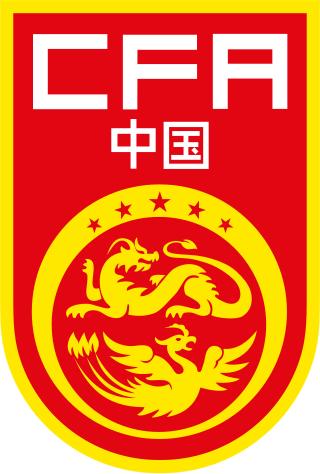
The China national football team represents the People's Republic of China in international association football and is governed by the Chinese Football Association.

The Japan national football team, also known by the nickname Samurai Blue, represents Japan in men's international football. It is controlled by the Japan Football Association (JFA), the governing body for football in Japan.

The South Korea national football team represents South Korea in men's international football and is governed by the Korea Football Association. South Korea has emerged as a major football power in Asia since the 1980s, having participated in ten consecutive and eleven overall FIFA World Cup tournaments, the most for any Asian country. Despite initially going through five World Cup tournaments without winning a match, South Korea became the first Asian team to reach the semi-finals when they co-hosted the 2002 tournament with Japan. South Korea also won two AFC Asian Cup titles, and finished as runners-up on four occasions. Furthermore, the team won three gold medals and three silver medals at the senior Asian Games.

The Saudi Arabia national football team represents Saudi Arabia in men's international football. They are known as Al-Suqour Al-Khodhur, a reference to their traditional colours of green and white, and represent both FIFA and the Asian Football Confederation (AFC).
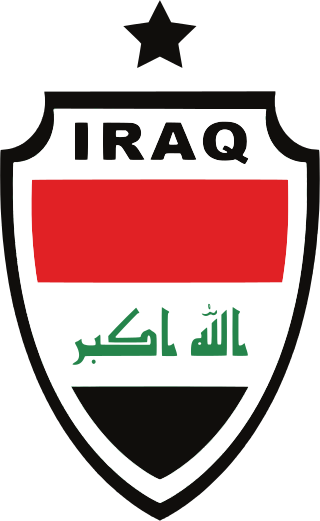
The Iraq national football team represents Iraq in international football and is controlled by the Iraq Football Association (IFA), the governing body for football in Iraq. Iraq's usual home venue is the Basra International Stadium.

The North Korea national football team represents North Korea in men's international football and it is controlled by the DPR Korea Football Association, the governing body for Football in North Korea. The team represents both FIFA and Asian Football Confederation (AFC).
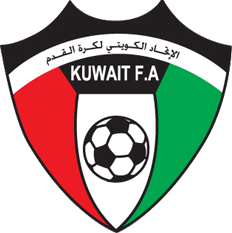
The Kuwait national football team is the national team of Kuwait and is controlled by the Kuwait Football Association. Kuwait made one World Cup finals appearance, in 1982, managing one point in the group stages. In the Asian Cup, Kuwait reached the final in 1976 and won the tournament in 1980.
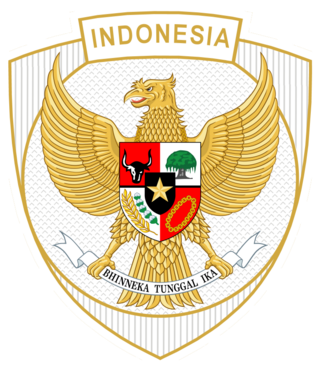
The Indonesia national football team represents Indonesia in international football. They were the first Asian team to participate in the FIFA World Cup, particularly in the 1938 edition as the Dutch East Indies. The 6–0 loss to eventual finalists Hungary in the first round remains the nation's only appearance in the World Cup. Thus, Indonesia holds the World Cup records as the team with the fewest matches played (1) and one of the teams with the fewest goals scored (0).

The Jordan national football team represents Jordan in international football and is controlled by the Jordan Football Association. Jordan have never qualified for the World Cup finals but have appeared five times in the Asian Cup and reached the final match of a major tournament for the first time in the 2023 edition, finishing as runners-up for the first time.

The Thailand national football team represents Thailand in senior international football and is controlled by the Football Association of Thailand.

The Oman national association football team represents Oman in association football and is controlled by the Oman Football Association (OFA).
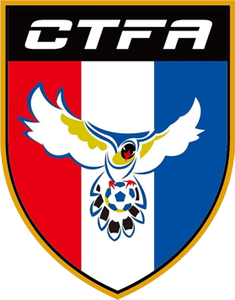
The Chinese Taipei national football team represents Taiwan in international football and is controlled by the Chinese Taipei Football Association. Despite never qualifying for the FIFA World Cup, Chinese Taipei, then known as Republic of China, reached the semi-finals of the 1960 and 1968 AFC Asian Cups, finishing third in the former. The side also won gold at the 1954 and 1958 Asian Games, although the players in the team originated from British Hong Kong.

The Malaysia national football team represents Malaysia in international football and is governed by the Football Association of Malaysia. The national team is recognised by FIFA as the successor of the defunct Malaya national football team which was founded for the 1963 Merdeka Tournament one month before the institution of Malaysia. The team is officially nicknamed Harimau Malaya in reference to the Malayan Tiger. Former player Mokhtar Dahari is one of the top goal scorers in international history.
The Philippines national football team represents the Philippines in international football, governed by the Philippine Football Federation (PFF) and has been playing internationally since 1913.
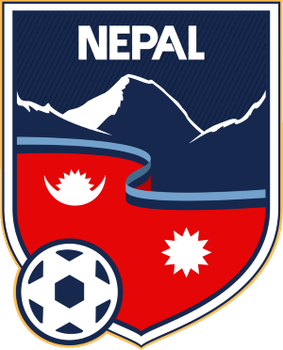
The Nepal national football team represents Nepal in International men's football, and is governed by the All Nepal Football Association (ANFA). A member of the Asian Football Confederation (AFC), the Nepali football team plays their home games at Dasharath Stadium in Kathmandu.
The Japan women's national football team, commonly known as Nadeshiko Japan (なでしこジャパン), represents Japan in women's association football and is run by the Japan Football Association (JFA). The only country to win every FIFA competition and the most successful women's national team in the Asian Football Confederation, its highest ranking in the FIFA Women's World Rankings is 3rd, achieved in December 2011.

The Australia men's national soccer team represents Australia in international men's soccer. Officially nicknamed the Socceroos, the team is controlled by the governing body for soccer in Australia, Football Australia, which is affiliated with the Asian Football Confederation (AFC) and the regional ASEAN Football Federation (AFF).
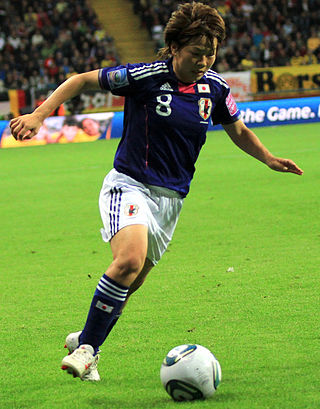
Aya Miyama is a Japanese former footballer who played for the Japan national team starting in 2003, and from 2012 to 2016 served as captain of the team. She appeared in four World Cups between 2003 and 2015, and was part of the team that won the 2011 World Cup for Japan. Miyama also led Japan to a silver medal at the 2012 Summer Olympics in London.
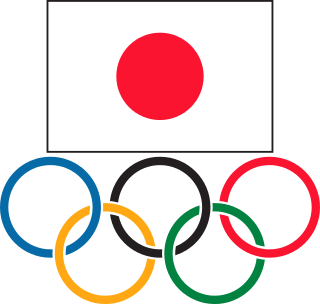
The Japan national under-23 football team is a national association football youth team of Japan and is controlled by the Japan Football Association. The team won the gold medal at the 2010 Asian Games and were champions in the 2016 AFC U-23 Championship. Since 1992, it was decided that teams targeting athletes under the age of 23 will participate in the Olympics. Therefore, the name changes to Japan national under-22 football team the year before the Olympics and Japan national under-21 football team two years prior. The exception to this was the 2020 Tokyo Olympics, which was postponed one year, so in 2021, the team was called the Japan national under-24 football team.
The Australia women's national soccer team is overseen by the governing body for soccer in Australia, Football Australia, which is currently a member of the Asian Football Confederation (AFC) and the regional ASEAN Football Federation (AFF) since leaving the Oceania Football Confederation (OFC) in 2006. The team's official nickname is "the Matildas" ; they were known as the "Female Socceroos" before 1995.